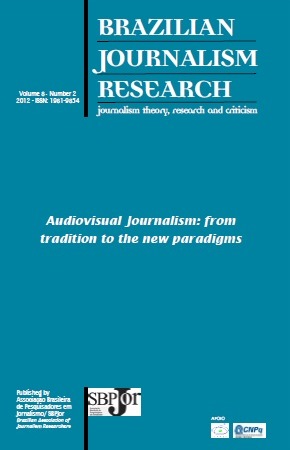Abstract
This paper proposes a reflection on audiovisual journalism from the perspective of transmedia storytelling (NT), a term coined by Henry Jenkins (2009a) in his research on the culture of convergence. How has media convergence affected the language and aesthetics of audiovisual journalism? And what of the routine and profile of its professionals? Or the relationship with the audience? What are the new paradigms and what has changed in their production processes as regards the use of new media? To reflect on these and other issues, it is necessary to identify and analyze aspects of transmedia storytelling on TV Folha, an audiovisual program inspired by printing, which began as a private channel on the web and is today shown by a public broadcaster. It is a product which seems to indicate that transmedia storytelling is beginning to establish a firm place in Brazilian audiovisual journalism based on its relationship with new information platforms.
Copyright for articles published in this journal is retained by the authors, with first publication rights granted to the journal. By virtue of their appearance in this open access journal, articles are free to use, with proper attribution, in educational and other non-commercial settings.
This work is licensed under a Creative Commons Attribution-NonCommercial-NoDerivatives 4.0 International License.


